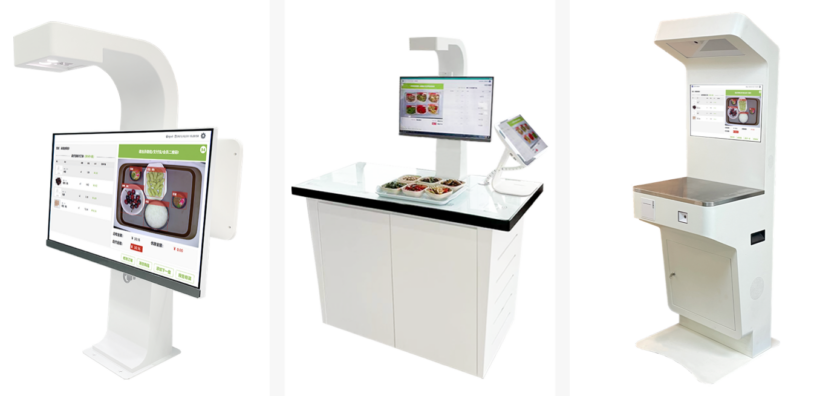Fill form to unlock content
Error - something went wrong!
Your content is just a step away. Please submit below.
Thank you!
AI in Restaurants Helps Lower Costs and Grow Sales

From dine-in restaurants to quick-serve takeout and workplace cafeterias, customers expect not just great-tasting food but fast and convenient experiences, too. At the same time, the food service industry is looking for more efficient operations, accurate inventory management, and a boost in profitability.
To stay ahead of the game, large food retailers rely on transformational technologies like edge AI and computer vision. Platforms powered by these technologies enable retailers to transition from time-consuming conventional checkout to the efficient self-service their customers want. Plus, they provide valuable data that helps understand customer preferences, minimize wasted resources, stock shortages, and suboptimal performance.
Shanghai Kaijing Information Technology Co. Ltd., a leading IT solutions provider, developed its AI-Powered Automated Checkout Services to overcome food service challenges, meet new customer demands, and create new opportunities.
To stay ahead of the game, large food #retailers rely on transformational technologies like #EdgeAI and #ComputerVision. Shanghai Kaijing Information Technology Co. Ltd. via @insightdottech
Food Service Retail Transformation at Work
Take, for example, LaoXiang Chicken Catering Co., a quick-service restaurant (QSR) chain with a network of more than 2,000 locations across China. The restaurant’s goal was to overcome a series of challenges such as tracking performance and maximizing resources across all store locations by:
Managing operations at scale: A holistic understanding of operations across all stores without diminishing service quality was the top priority. With a plan for significant expansion—to a count of 10,000 stores—the company needed to make sure the entire operations continued to run smoothly even with this monumental growth.
Increasing profitability: QSRs typically run on low profit margins due to high food and rent costs. But their largest expenditure is on staff, which can account for 30% of monthly costs. And with a growing number of stores, food waste was eating into profit margins.
Improving the customer experience: One of the challenges the restaurant faced was maintaining consistent performance across the chain—and a rapid expansion increases the problem. Regardless of where customers dine, LaoXiang Chicken needed to guarantee a uniform and positive experience across every store. To maintain a positive brand reputation, the company needed to overcome issues like slow service, long lines, inconsistent food quality, and unhygienic areas.
Enhancing operational transparency: The company wanted more visibility into store results to identify the best and lowest performers. This information would allow management to pinpoint which factors contributed to the results and implement corrective actions. The roadblock was they were using outdated and inefficient manual methods to do so—making for a nearly impossible task to perform at scale.
It became clear that LaoXiang Chicken required the Shanghai Kaijing Canteen solution, an AI-Powered Automated Checkout Services end-to-end digital retail platform. The platform offers AI and computer vision-enabled function modules for applications such as product recognition and weight measurement, pricing, facial recognition, payments, data analysis, comprehensive system management, and more.
Because food service locations have different physical layouts and products, the POS stations come in three form factors—desktop all-in-one, counter-style checkout, and vertical checkout—giving food retailers like LaoXiang Chicken the flexibility needed to accommodate every store (Figure 1).

AI in Restaurants Deliver Measurable Results
Working with Shanghai Kaijing, LaoXiang Chicken achieved significant results, which included the ability to:
- Reduce the need for manual checkout tasks and customer checkout time via real-time, product SKU identification, and transaction bill generation.
- Predict peak dining times by analyzing customer flow patterns, enabling managers to understand traffic trends, proactively prepare for customer surges or downtimes, and make informed operational and resource adjustments.
- Minimize food waste with effective inventory management, ensuring stores optimize stock levels based on accurate consumption pattern forecasts.
- Improve standard operating procedures related to food quality, kitchen hygiene, and adherence to safety regulations by leveraging AI and computer vision AI-driven analytics.
- Empower management with a high-level overview of performance metrics across store locations, identifying weak areas of operations so necessary adjustments can be prioritized and promptly addressed.
“Overall, our platform enabled LaoXiang Chicken to implement strategic decision-making, which contributed to revenue growth and improved customer experience,” says Zhengting He, CTO of Shanghai Kaijing. Each store achieved +/- $450 reduction per month in labor costs and up to 80% improvement in checkout efficiency—eliminating customer loss due to long lines. In addition, the company saw a 10% sales increase per day leading to an annual +/- $38,700 profit increase in each store.
Tech and Tools Power AI in Restaurants
To enhance Canteen’s platform performance, the company turned to Intel technologies. Intel® Core™ processors and edge AI technology provide the performance needed for near real-time SKU identification with a 99% accuracy rate. “Our testing shows that this level of performance and accuracy facilitates an average checkout time of three seconds,” says Zhengting He. And with its advanced computer vision capabilities, the Intel® OpenVINO™ toolkit optimizes inferencing performance.
The Intel® oneAPI Video Processing Library also plays an important role in Canteen’s video analytics capabilities. For example, the advanced hardware and software capabilities on Intel® GPUs allow AI-driven quality and compliance checks to run off-hours.
Shanghai Kaijing goes beyond delivering advanced products like Canteen by providing other services, including customized consulting, product lifecycle support, CRM, and data analytics to help optimize supply chains and improve operational efficiency.
The company provides services that cater to diverse client needs, ensuring their sustainable growth strategies and adherence to industry standards. “Our leading customers are expanding rapidly, and we believe such trends will continue,” says John Yang, Shanghai Kaijing CMO. “We are excited to help companies like LaoXiang Chicken to continue working toward its goal of providing quality and affordable food to people all over the world.”
Edited by Christina Cardoza, Associate Editorial Director for insight.tech.